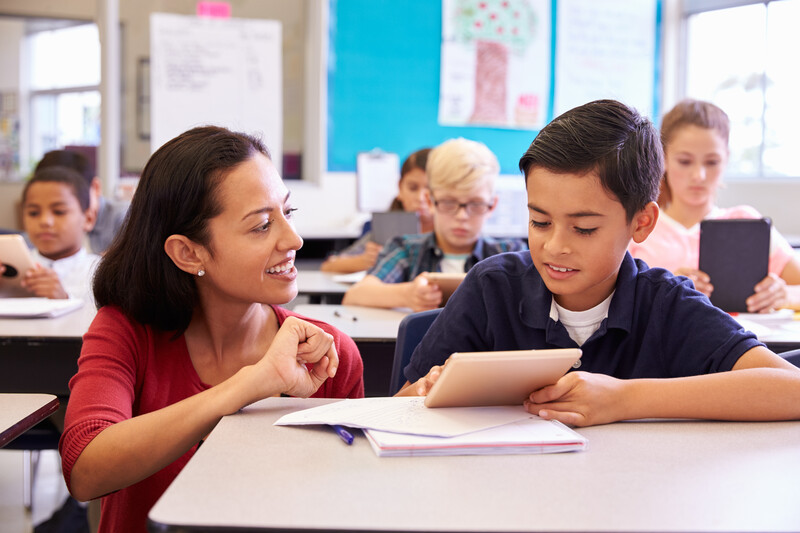February 1, 2014
•
5 min (est.)•
Vol. 71•
No. 5Art and Science of Teaching / Investigation—The New Research Report
Students can learn a lot from writing the traditional research report—for example, how to research a topic, highlight main points, and use proper grammar and style. But teachers can expand this typical fare to be more robust, more challenging, and more closely related to the type of research that students will engage in throughout their lives—namely, investigation.
Over the decades, I've written about the process of investigation and how it differs from the traditional research report (Marzano, 1992; Marzano, 2007; Marzano & Kendall, 2007). Rather than simply looking up and summarizing information on a topic, students must identify and resolve contradictions and confusions about a topic.
For example, a research report on Martin Luther King Jr. might focus on articulating the major events in King's life. However, an investigation would focus on contradictions (one source reports one thing; another source reports something different) or confusions (no one is clear about what occurred). This is basically what we call investigative reporting.
Three types of investigation tasks easily lend themselves to classroom use.
In a definitional investigation, students construct a definition for a concept about which there are differing opinions. Definitional investigation tasks typically answer questions like, What does _____ mean? What are the defining characteristics of ______? People naturally engage in definitional investigation when they attempt to answer a question like, What are the boundaries of free speech?
A teacher might ask students to address the question, What is bullying? Instead of simply looking up and summarizing information, students might gather varying opinions about what constitutes bullying. Or students might identify areas of confusion. One source might report that bullying is quite prevalent in schools, whereas another source might report that it's only moderately prevalent. Students would then either support one or more of those opinions or clear up one or more of the confusions.
In a historical investigation, students outline a plausible sequence of events to describe what occurred during a past incident about which there are varying opinions. Historical investigation tasks typically answer questions like, What really happened at ______? What events led up to ______? People naturally engage in this type of investigation when they ask, Given the various theories, how were the pyramids constructed? Who planned the assassination of John F. Kennedy?
A high school mathematics teacher might launch a historical investigation by asking, Who invented calculus: Isaac Newton or Gottfried Leibniz? Students would then look at the various stories about the creation of calculus with an eye toward clearing up contradictions and confusions. For example, there might be differences of opinion regarding whether Newton's 1666 work that he called The Method of Fluxions was really strongly related to what eventually became known as calculus.
In a projective investigation, students imagine a plausible scenario for a future event or a hypothetical past event. Projective investigation tasks typically answer questions like, What would have happened if______? What will happen if _______? Projective investigation occurs when we ask questions like, What will happen if the polar ice caps melt?
In a social studies class, a projective investigation task might address the question, What might have happened if Abraham Lincoln had not been assassinated? Similarly, a science teacher might have students address the question, What would happen if a comet the size of a football field hit Manhattan?
Investigation tasks are complex and are best approached in a staged manner. These tasks should be highly structured at first. For students who are new to investigation, a teacher might assign a question and point students to specific resources they should consult. The teacher might also help students identify contradictions and confusions salient in those sources. Although students would, individually or in groups, select the positions they wanted to take, the teacher would help them construct support for their positions.
Over time, the teacher would gradually release responsibility to students. Perhaps the next step would be to assign a question and point students to resources in which the contradictions and confusions are fairly obvious. Students would independently (or in groups) select and defend a given position. In the last stage of the gradual release process, the teacher might ask students to design their own questions and engage in the investigation process independently.
The traditional research report still has a place in school, but more often than not, investigation tasks can serve a more thoughtful purpose, with their focus on the important skills of taking and defending a position and resolving or clarifying contradictions. Investigation tasks are also aligned with much of the research that students will read about in the media, making such tasks more authentically related to their lives outside school.
References
•
Marzano, R. J. (1992). A different type of classroom: Teaching with dimensions of learning. Alexandria, VA: ASCD.
•
Marzano, R. J. (2007). The art and science of teaching: A comprehensive framework for effective instruction. Alexandria, VA: ASCD.
•
Marzano, R. J., & Kendall, J. S. (2007). The new taxonomy of educational objectives. (2nd ed.). Thousand Oaks, CA: Corwin.



